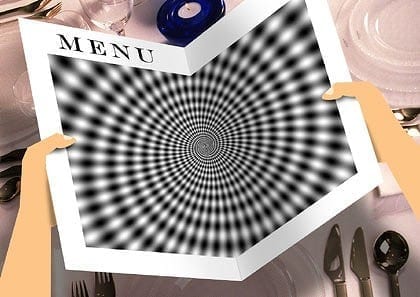Could there be anything less fit for purpose than a wine list?
You know the drill. The waiter arrives with the bread, the water and the list. You open it and your heart sinks. Whilst you may perhaps know half of the suppliers after a lifetime working in the industry, you know deep down that you are essentially clueless.
This is because the mathematical odds that you will have tried that particular wine from that particular producer from that particular vintage are close to zero (unless your name happens to be Jancis, Huon or Robert).
This therefore means that when a consumer is presented with a wine list, it might as well be in Swahili. It places them 100% in the hands of the restaurant and 90% plus of floor staff are not going to be much help.
But there is change afoot. From the back streets of Soho, London to the laneways of Melbourne, lists are getting shorter, wine and food pairing is now centre stage and wait staff are learning how to sell wine. This, in my view, is the most exciting development for fine wine producers in very long time and should be vigorously encouraged by the industry.
I don’t mean “Chardonnay goes with chicken / Riesling goes with fish” type food matching. I’m talking about the understanding that a plate of food should be a complete integrated experience that necessarily involves wine.
Wine can be used to compliment, counter, underscore or accentuate taste elements within the dish. The big change is the realisation that wine is just as important as the fresh ingredients in the creation of this integrated plate
What this now means is that wait staff can detail wine with the same ease that they can the fresh ingredients used in the meal. They are using the same sort of nomenclature, the same thought processes in relation to how the meal was put together. This is extremely important for the ‘fresh and locally sourced’ argument so commonly espoused by the great chefs (and anyone holding a frying pan with a camera in their face for that matter).
The key next step is to get wine incorporated into food and lifestyle television presentation. Why should any chef be excused from extending their sophisticated palate to understanding how wine is going to affect the taste of their food? Wine will, after all, be part of the equation regardless.
I should emphasize at this point that this is a very early stage trend. We recently analyzed Australian wine lists using our Wine On-Premise database and found that the average number of total listings (by the glass, bottle, magnum etc.) on a wine list in Australia was 93. Even in restaurants where the average price of a main course plate was less than $25, the average number of listings was 59.
This is a classic case of the blind leading the blind. It is the sort of thing that would have Richard Branson licking his lips (i.e. a service that is standardized globally and utterly stupid in the context of what it is meant to do for people).
Why are wine lists like this? It is not helping that the industry rewards and awards sommeliers for producing lists that are ‘comprehensive’. The only winner from that exercise is the sommelier who perhaps gets to keep his job for another year because of the reputation forged. Customers are frustrated by choice, the restaurant and its suppliers are selling much less wine than they would do otherwise and the accountant will be tearing what remains of his hair out…
What should a wine list do? A wine by-the-glass list need only be a selection that significantly enhances the menu items. Sure when you turn to the by-the-bottle section, people are going to want choice but these too can perform the same function.
You can then take each wine and say: –
“We like this wine because…We think it goes particularly well with our (X,Y & Z). We think it brings …to the experience”.
Feature. Attributes. Benefits.
Selling in other words. Now perhaps you don’t have to be quite that explicit on the list itself but restaurant staff certainly do. They are going to have be to in order to compete in this new paradigm. And the best thing you can do as a producer, supplier or composer of lists is to push this as far and hard as you can.
For if each plate comes to the table with a perfectly paired glass of wine and the customer appreciates that so much more than their own hapless attempts to select something by random chance, they may just want to tell others about the wine that made the meal.
Brands can thereafter once again be built in the On-Premise. Now that’s a revolution we should all want to be part of.
Note WBS produces the only research into what is on wine lists in Australia, the UK and Canada. Follow this link to see details.

